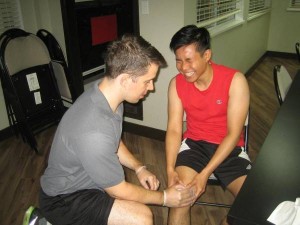Knee osteoarthritis is a common type of osteoarthritis affecting millions all over the world. Proper management of the condition is based on the early detection of the symptoms, correct diagnosis and suitable treatment.
https://www.youtube.com/watch?v=e4dzARC7iXI
What are the indications?
It is important to note that knee osteoarthritis is defined by the insidious start of joint pain, rigidity and reduced range of motion.
Unsuspectingly, the condition develops in a gradual manner over several years and remains unnoticed until it becomes symptomatic. It is likely for an individual with the condition to complain initially of pain that arises while walking along with limitations with walking, moving from sitting to standing and climbing stairs. Other possible complaints include a sensation that the joint is about to “give out”, locking up of the knee or a popping sensation in the joint.

Localized swelling might also be present. The pain linked with knee osteoarthritis is generally worse after activity especially if the knee was overused. The rigidity can worsen after being seated for prolonged periods.
As the condition progresses, the symptoms become severe. The pain can become continuous.
Management of knee osteoarthritis
It is important to note that knee osteoarthritis could not be cured but there are measures that can help manage the symptoms.
Over-the-counter medications such as acetaminophen can provide relief to the pain. Some achieve better relief with NSAIDs while others might be prescribed with opioid analgesic medications for stronger relief.
Aside from oral drugs, other options for the condition include a local intra-articular injection of steroids or viscosupplements. The steroid shots are utilized to provide rapid relief to the pain and inflammation. The viscosupplements are gel-like substances that are injected into the joint for lubrication and cushioning.
